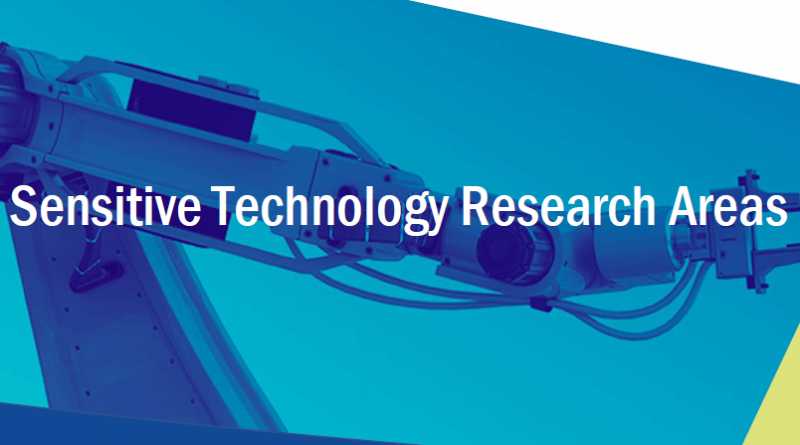Canada’s Sensitive Technology Research Areas
4. Advanced Sensing and Surveillance
Advanced sensing and surveillance refers to a large array of advanced technologies that detect, measure or monitor physical, chemical, biological or environmental conditions and generate data or information about them. Advanced surveillance technologies, in particular, are used to monitor and observe the activities and communications of specific individuals or groups for national security or law enforcement purposes, but have also been used for mass surveillance with increased accuracy and scale.
Advanced biometric recognition technologies
Technologies that identify individuals based on their distinctive physical identifiers (e.g. face, fingerprint or DNA) or behavioural identifiers (e.g. gait, keystroke pattern and voice). These technologies are becoming more advanced due to improving sensing capabilities, as well as integrating artificial intelligence to identify/verify an individual more quickly and accurately.
Advanced radar technologies
Radar is a system that uses radio waves to detect moving objects and measure their distance, speed and direction. Advancements in radar technology could enable improved detection and surveillance in different environments and over greater distances. Examples include: active electronically-scanned arrays, cognitive radars, high frequency skywave radar (or over-the-horizon radar), passive radar and synthetic aperture radar.
Atomic interferometer sensors
Sensors that perform sensitive interferometric measurements using the wave character of atomic particles and quantum gases. These sensors can detect small changes in inertial forces and can be used in gravimetry. They can also improve accuracy in navigation and provide position information in environments where the Global Positioning System (GPS) is unavailable.
Cross-cueing sensors
Systems that enable multiple sensors to cue one another. Cross cueing can be used in satellites for data validation, objection tracking, enhanced reliability (i.e. in the event of a sensor failure) and earth observations.
Electric field sensors
Sensors that detect variations in electric fields and use low amounts of power. They are useful for detecting power lines or lightning, as well as locating power grids or damaged components in the aftermath of a natural disaster.
Imaging and optical devices and sensors
Devices and sensors that provide a visual depiction of the physical structure of an object beyond the typical capabilities of consumer grade imaging techniques such as cameras, cellphones, and visible light-imaging. Such technologies typically make use of electromagnetic radiation beyond the visible spectrum, or use advanced techniques and materials to improve optical capabilities, such as enabling more precise imaging from a greater distance. This sensitive research area also includes sensitive infrared sensors.
Magnetic field sensors (or magnetometers)
Sensors that are used to detect or measure changes in a magnetic field, or its intensity or direction.
Micro (or nano) electro-mechanical systems (M/NEMS)
Miniaturized, lightweight electro-mechanical devices that integrate mechanical and electrical functionality at the microscopic or nano level. A potential use of M/NEMS could be as ‘smart dust’, or a group of M/NEMs, made up of various components, including sensors, circuits, communications technology and a power supply, that function as a single digital entity. Smart dust could be light enough to float in the air and detect vibrations, light, pressure and temperature, among other things, to capture a great deal of information about a particular environment.
Position, navigation and timing (PNT) technology
Systems, platforms or capabilities that enable accurate and timely calculation of positioning, navigation and timing. These technologies are critical to a wide-range of applications, most notably for enabling the Global Navigation Satellite System (GNSS), one of which is the widely-used Global Positioning System (GPS), but also for enabling navigation in areas where GPS or GNSS do not work. Examples include: chip-scale advanced atomic clocks, gravity-aided inertial navigation system, long-range underwater navigation system, magnetic anomaly navigation, precision inertial navigation system.
Side scan sonar
An active sonar system that uses a transducer array to send and receive acoustic pulses in swaths laterally from the tow-body or vessel, enabling it to quickly scan a large area in a body of water to produce an image of the sea floor beneath the tow-body or vessel.
Synthetic aperture sonar (SAS)
An active sonar system that produces high resolution images of the sea floor along the track of the vessel or tow body. SAS can send continuous sonar signals to capture images underwater at 30 times the resolution of traditional sonar systems, as well as up to 10 times the range and area coverage.
Underwater (wireless) sensor network
Network of sensors and autonomous/uncrewed underwater vehicles that use acoustic waves to communicate with each other, or with underwater sinks that collect and transmit data from deep ocean sensors, to enable remote sensing, surveillance and ocean exploration, observation and monitoring.





